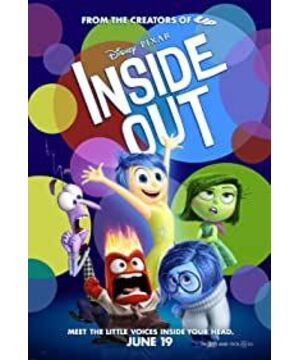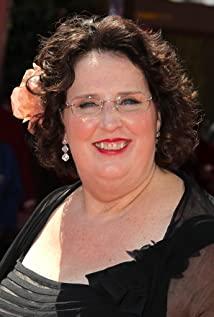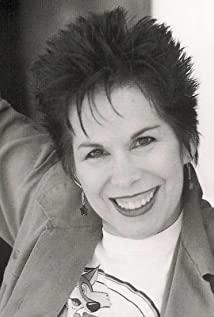1. Life is not only made up of happiness.
Each core memory is composed of different emotions. In this film, the very good handling is reflected in "growth." Before the age of eleven, our world may be happy, but as we grow up, our emotions will become more abundant. Riley moved to San Francisco when she was eleven. The change in the environment brought her growth, and her core memory has since been mixed with multiple emotions.
2. Personality collapses and rebuilds along with growth and changes.
Before the age of eleven, Riley’s personality island had only five islands: Trick or Treat Island, Hockey, Friendship, Honesty, and Family. During the move to San Francisco, they collapsed one by one. Finally, when the five emotions watched the rebuilt personality island, there was a lot of discussion, but careful observation showed that the "honest island" was not rebuilt in the end, which means that as we grow, honesty may slowly go away. The "Quarrel Zone" has been added to the "Friendship Island": it means that growth makes us realize that friendship is not just about loving each other. The most interesting thing is that I'm tired of mentioning "Oh, there is a fashion island, this is my site", which accurately conveys the nuisances in fashion. Ha ha.
3. Family is our ultimate destination.
Riley’s five individual islands collapsed one by one, but if you observe carefully, the family island has fallen a little bit, never completely collapsed. Lele jumped up for the last time, grasped the worry, and jumped back to the brain headquarters, also jumping on a small trampoline on the family island. Family is always our home. When you are depressed, lost, or encounter difficulties, you can always start from here.
Fourth, the process of abstract thinking.
Most people don't understand which part of the mind belongs to this part. Let me briefly talk about it. The basic process of thinking is divided into several types, analysis and synthesis, comparison, abstraction and generalization, etc., and here, it is only one type of thinking: abstract thinking.
The plot developed to the point where Lei Li just came to the new school and went to eat lunch on her own. At this time, a mental worker came over and asked: "What abstract thinking are we here to do today?" There was an answer: "Loneliness." Loneliness is a very abstract concept. So it is very accurate to use in this paragraph.
In the movie, Lele, Worry, and the abstract thinking factory experienced by the popsicle are divided into four stages. Non-objective fragmentation, Deconstruction, Two-dimensionalization, Non-Figurativity.
I don’t have relevant professional knowledge, but the international media’s comments on this step are very accurate. The first stage of non-realistic fragmentation is easily reminiscent of Picasso’s paintings. The popsicle screams "My face! My beautiful face" !" It really made me laugh to death. As for the process of two-dimensionalization, I immediately thought of the cosmic dimension attack in "Three-Body". It's so imaginative.
5. Memory is limited, remember those that are worth remembering.
After the core memory enters the core memory area, if it fades, it will be cleaned up to memory ruins by mental workers, and then weathered away. The phone number, the name given to the doll, the name of the President of the United States (leave Washington, Lincoln, and the fat man, haha!) and the piano music that you have practiced... all of these may be forgotten by you.
However, the first time you score a goal, your parents sit down and accompany you quietly...These memories will never go away. Remember everything that is worth remembering.
Sixth, sadness makes people calm and help others think.
There is an interview with the creator of "Brain Agents" about "why do we need grief", which need not be said. In the end, Lele also found that the core memory seemed happy, but many evolved from sadness. This point can be boiled down to the first point, but there are a few details that also show the effect of sadness.
In the film, Youyou has been helping Lele, and many of her ideas are said to have come up with her. She knows that the knowledge deconstruction zone is a dangerous area. In the end, she got out of her wits and escaped. She also proposed to wake up Lily in the middle of the night with a fright, instead of waking her up excitedly. Similarly, in the end, the light bulb of the idea that Lili ran away from home was embedded in Lili's brain, and other emotions could not be taken out, only she could. Sadness makes people calm, and can eliminate people's absurd thoughts.
7. Fear inspires anger, disgust inspires anger.
In addition to showing the dialectical relationship between happiness and sadness, the small details of the whole film also clarify the relationship of other emotions. Every time anger starts to operate the main console, it will knock the purple little person away. Fear may provoke anger. Similarly, in the end, disgust stimulates anger by damaging anger, and burns the glass in the main control room of the mind. , Rescued Lele and worry, that is, disgust can also inspire anger.
8. The dream is absurd, but it reveals your emotions.
There are only two fragments in the dream. One is Lele watching Lele skating, and the other is the emotional rush into the dream factory, and then he is afraid of being on duty at the Headquarters. But when he was on duty, he murmured: "Worry and happiness are not there, only I will be on duty." Your dreams can be happy, sad, and fearful, but basically there is no disgust or anger.
9. If you are dishonest, thinking cannot proceed normally.
Lele, Worry, and Popsicles got on the thinking train and thought they could return to the brain's main control room smoothly, but at this time, Lily stole her mother's credit card. The city island collapsed and crashed the track of the Mind Express, and the emotions returned to the original point again. Patrick, the Yale philosophy professor who went to watch the film with me, said that he particularly liked this paragraph. Honesty is a prerequisite for normal thinking. Honesty allows you to think without distraction.
10. Everyone's dominant emotions are different.
Riley is led by happiness, mother is led by sadness, and father is led by anger. Later, you will see that the teacher’s dominant emotion is sadness, the bus driver’s dominant emotion is anger, a dog’s dominant emotion is happiness, and a cat... The most wonderful thing here is that a cat just looks like nothing. There was no dominant emotion. Later, disgust came out and touched the console, hahahahaha, yes, your cat hates you! ! !
I think this is also saying that everyone has their own different emotions. You are happy by yourself, but you cannot ask others to be happy; in the same way, you are angry, and no one has the obligation to be as angry as you.
11. The death of a popsicle.
This is the biggest tear point in this film. Popsicle is Riley's fantasy friend. As Riley grew up, the popsicle was gradually forgotten. In this film, in order to help Lele return to the brain headquarters, he jumped out of the car and disappeared into the abyss of memory. This setting is also the place that hits me the most. I believe that every child who grows up alone will have a fantasy playmate. As the children grow up, they will fade away and then disappear. For myself, my fantasy playmates are Simba and Aladdin, haha. What's interesting is that they are also Disney animated characters. When I was growing up, I talked to them from time to time. Seeing the popsicles gradually weathering away, the whole theater "ah--", many people cried, I just remembered, oh, I haven't chatted with Aladdin and Simba for a long time.
(Due to version issues, the translation of names and proper nouns in this article may have some origins from the version released in mainland China)
View more about Inside Out reviews











